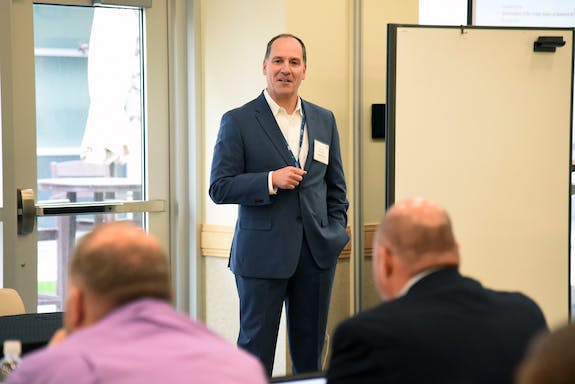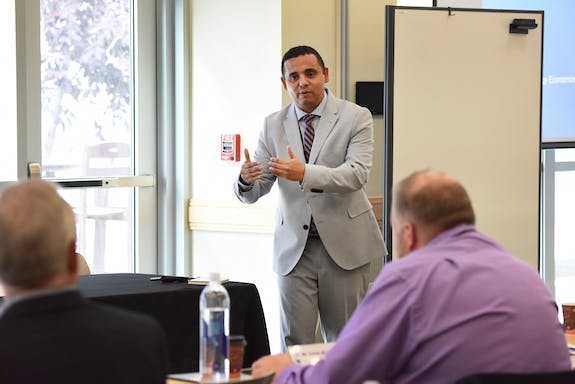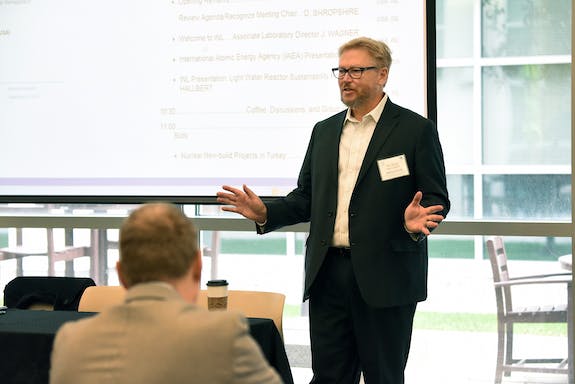Energy economics are a puzzlement. Do an internet search of “How much does electricity cost?” and you’ll get a kaleidoscopical blizzard of results.
What state are you asking about? (Much less what country?) Residential, commercial, industrial, transportation, or an average? Here’s a little tip – the U.S. Energy Information Agency has a webpage that addresses those basics, and happens to reveal that electricity in Idaho is comparatively inexpensive.
At Idaho National Laboratory, meanwhile, researchers are also constantly examining the cost of energy technologies, because INL’s mission is to discover, demonstrate and secure innovative nuclear energy solutions, other clean energy options and critical infrastructure. Driving down the costs of nuclear power supports that mission. A particular focus is on the economics of nuclear power, which is why the International Atomic Energy Agency (IAEA) is holding a workshop on nuclear cost analysis at INL.

“Hosting the IAEA workshop on nuclear cost analysis – and having a diversity of representatives from IAEA member states visit INL – is a great opportunity to highlight U.S. work in nuclear economics,” said John Wagner, associate laboratory director for Nuclear Science and Technology. “This workshop also supports our focus on improving the economic competitiveness of nuclear energy through R&D to reduce the cost of developing, deploying and operating nuclear reactor systems.”

Workshop participants agreed that collaboration among IAEA member states on economic challenges is key to long-term success. “Advanced energy technologies pose a lot of opportunities – and a lot of challenges,” said Marcelo Wendel, energy research analyst at Empresa de Pesquisa Energética, Brazil, and workshop chair. “This workshop and others provide an opportunity for more cooperation among policymakers from around the world to overcome these challenges.”
Advanced fuel cycle cost basis report is catalyst
One impetus for the workshop is a U.S. DOE report led by INL – Advanced Fuel Cycle Cost Basis – first published internally more than 15 years ago. The report describes the cost basis development process, reference information on cost modules, a procedure for estimating fuel cycle costs, economic evaluation guidelines, and a discussion on the integration of cost data into economic computer models.
Since its inception, the report has been periodically updated by INL and other DOE contributors. The comprehensive cost information is invaluable to guide nuclear energy technology decisions for the DOE and can be very useful for the broader international community, particularly for countries that are considering establishing a commercial nuclear power program.
Economics essential to INL nuclear research programs
Of course, every nuclear research program at INL includes an economic aspect – the coolest invention or advancement is of little good if the end product is prohibitively expensive. Driving down the cost of nuclear-generated electricity is especially integral in today’s competitive electricity marketplace.

One example of such a program is the Advanced Remote Monitoring project recently undertaken in partnership with the Utilities Service Alliance (USA), Inc., under the Department of Energy’s U.S. Industry Opportunities for Advanced Nuclear Technology Development Funding Opportunity Announcement. DOE is investing more than $9 million in the effort, while the USA will contribute more than $4 million over three years. In oversimplified terms, INL and USA are working to deploy modern technologies to automate data collection, analytics, and reporting while modernizing existing facilities and processes to improve efficiencies – improved efficiency means lower cost.
Another is the long-standing Light Water Reactor Sustainability program that is developing the technical basis for extending the safe, reliable, and economical operations of the existing fleet. The broader program is working to address some of industry’s highest-priority economic challenges through technology and process innovations while also working to improve the integration of nuclear, wind, and solar power and how the current fleet responds – cost effectively – to the grid realities as demonstrated by the infamous duck curve, the pricing chart that shows how electricity prices can actually go to zero or below during certain time periods when a state is producing large amounts of solar. While we all enjoy low prices – and Public Utilities Fortnightly has reported Americans have seldom expended a smaller amount of their income for electricity – it’s not sustainable for utilities to have to give away their products. INL is working to ensure an affordable and resilient source of reliable electricity.

“Economics is key to everything we do,” explained Bruce Hallbert, director of the Technical Integration Office in DOE’s Light Water Reactor Sustainability Program. “This workshop is a great venue for sharing research on nuclear costs and estimating methodologies with an international community.”





